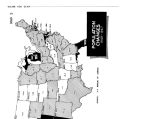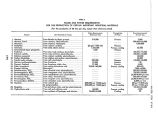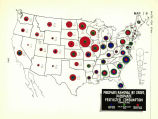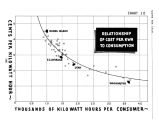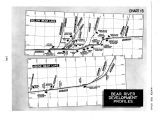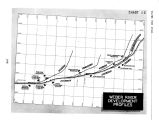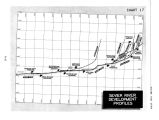| OCR Text |
Show WATER FOR UTAH UTAH'S NONFERROUS METALS INDUSTRIES ... The Resource Base ... ... The Industrial Plant... In Salt Lake and neighboring counties of Sum- mit and Tooele is located the greatest concentration of nonferrous mining and smelting operations in the Nation. ( See Map 14 - Copper, Lead, Zinc Metals Industry Pattern - page 58.) Not only do the four smelters and various concentrating mills and related plants in this area provide for the treatment of Utah's nonferrous metal ores, but they also receive large tonnages from nearby states. The mining districts which principally support the nonferrous metals industry of Utah are numerous and considerable in extent. They are located mainly in the mountainous areas immediately southwest and southeast of Salt Lake City. They include such renowned districts as Bingham and Park City and the famous Tintic district of Juab County. The extent of these districts' reserves of complex copper, lead and zinc- ores -- which also contain important fractions of gold, silver and minor metals - is not officially known. All evidence points to very large tonnages to support the nonferrous mining and smelting industry of the State for many decades into the future. This is particularly true in terms of the advances of mining, concentrating and processing technology which make possible utilizing large ore bodies of small metallic concentration, thus providing for considerable extension of all reserves. Because of its past and present reserves, Utah has been in the very forefront of nonferrous metal producers in the United States. For example in 1947, the State ranked second in copper, third in lead, seventh in zinc, second in silver and first in gold. In the total value of production of all of these metals, it has ranked second to Arizona for many years. Its copper mining usually has dominated the State's metallic production; the Utah Copper division of the Kennecott Copper Corporation at Bingham operates the largest open- pit copper mine in the world. To mill, beneficiate, concentrate and process the tremendous output of Utah's nonferrous metal mines as well as some of neighboring states, a very impressive industrial structure has been built in Utah. At its mills and smelters are produced semi- processed nonferrous materials such as blister copper, lead bullion, zinc and molybdenum concentrates, which includes gold and silver. An important by- product of the milling and smelting plants is sulphuric acid. There are three custom mills in the Salt Lake Valley with a combined daily capacity of 3,900 tons. These are International Smelting and Refining Company at Tooele; the United States Smelting, Refining and Mining Company at Mid- vale and the Combined Metals Reduction Company at Bauer for the treatment of both custom and company ores produced in Utah and adjoining states. Four noncustom mills provide a combined capacity in excess of 87,000 tons per day. These include the two mills and concentrating plants of the Utah Copper division of the Kennecott Copper Corporation at Arthur and Magna; the Silver King Coalition Mines Company at Park City and the Pacific Bridge Company at Park City, which operates primarily on the tailings of old mills. As noted, in addition to Utah's contribution to these smelters, substantial tonnages of ores and concentrates were shipped into the State from Idaho, Nevada, Arizona, California, Montana and Colorado, and from Cuba and Australia. Some secondary materials and residues are received from Tennessee, Illinois and New Jersey. ( See Map 15 - Flow of Copper, Lead and Zinc Content in Crude Ores and Concentrates into State - page 59.) The copper and lead concentrates which result from these milling operations are smelted in four plants in Utah. The Garfield copper smelter owned and operated by the American Smelting and Refining Company treats principally the output of the Kennecott Copper Company's [ 57] |















